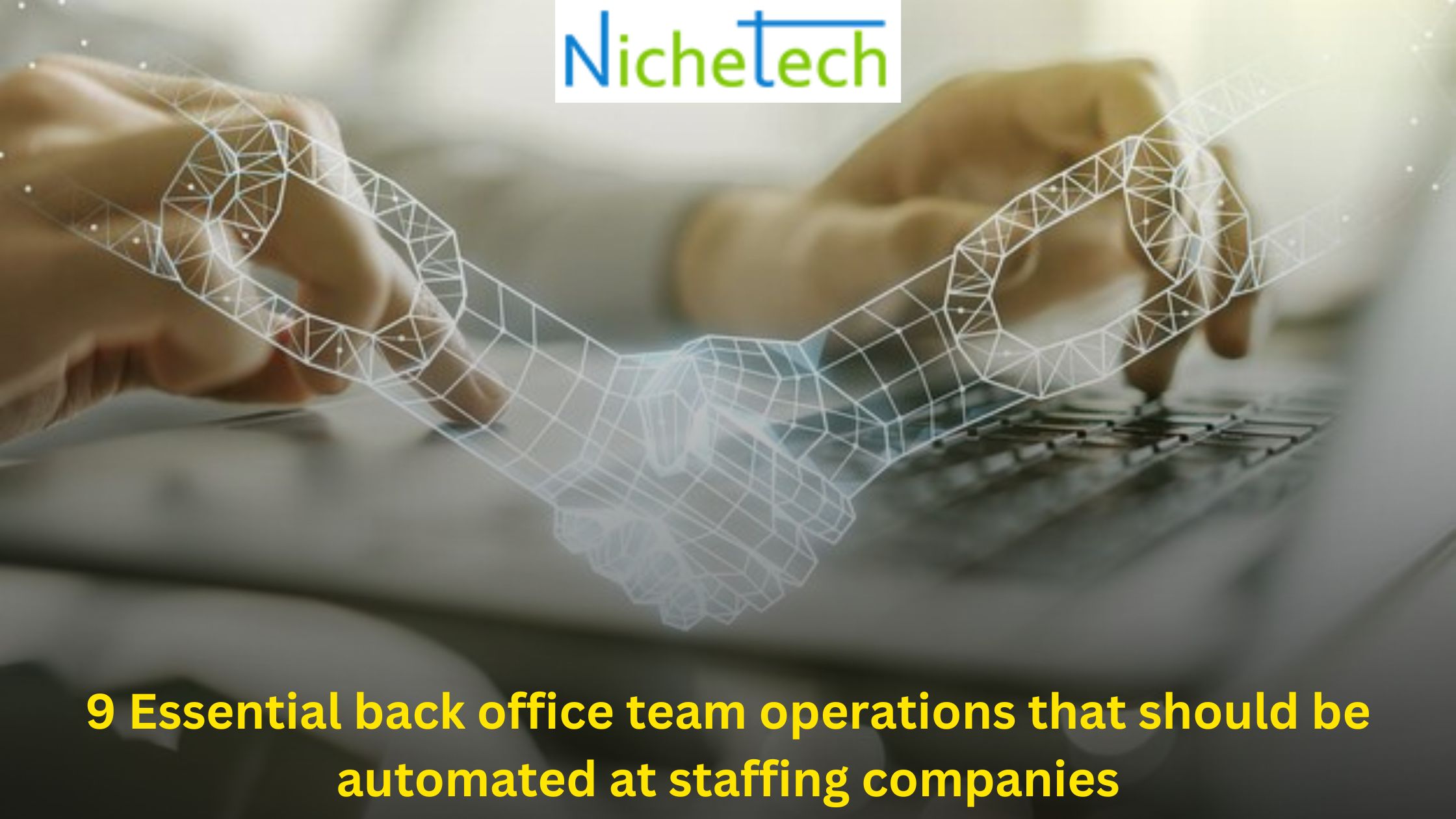Automating back-office operations in staffing companies can greatly enhance efficiency, reduce costs, and improve accuracy. Here are nine essential back-office functions that software for staffing companies should consider automating:
1. Applicant Tracking and Management
Automation Tasks: Resume screening, candidate matching, and interview scheduling can be streamlined using applicant tracking systems (ATS).
Benefits: Reduces time-to-hire, improves candidate engagement, and helps manage a larger pool of applicants efficiently.
2. Onboarding and Employee Documentation
Automation Tasks: Automated onboarding portals can handle the collection of necessary documents, digital signatures, and paperwork processing.
Benefits: Reduces manual data entry, ensures compliance, and provides a smoother onboarding experience for new hires.
3. Payroll Processing
Automation Tasks: Automated payroll systems can calculate hours, manage deductions, and process payments without manual intervention.
Benefits: Reduces payroll errors, ensures timely payments, and simplifies tax reporting and compliance.
4. Timesheet Management
Automation Tasks: Use software to track employee hours, approve timesheets, and integrate with payroll systems.
Benefits: Saves time, improves accuracy, and makes it easier to handle variations in billing, such as overtime and shift differentials.
5. Invoicing and Billing
Automation Tasks: Automated billing systems can generate invoices based on timesheet data, track payments, and manage accounts receivable.
Benefits: Faster billing cycles, reduced manual errors, and improved cash flow management.
6. Data Entry and Reporting
Automation Tasks: Use data processing tools to automate data entry and generate reports on recruitment metrics, financials, and employee performance.
Benefits: Reduces time spent on repetitive tasks and provides valuable insights through real-time data analytics.
7. Compliance and Document Management
Automation Tasks: Automate the tracking of compliance requirements, document renewals, and background checks to ensure regulatory adherence.
Benefits: Ensures that all documentation is up-to-date, reduces the risk of non-compliance, and simplifies audits.
8. Client Relationship Management (CRM)
Automation Tasks: Use CRM software to automate client follow-ups, contract renewals, and feedback collection.
Benefits: Enhances client communication, improves retention, and helps in upselling and cross-selling opportunities.
9. Candidate Engagement and Communication
Automation Tasks: Utilize chatbots, automated emails, and SMS for candidate engagement, follow-ups, and updates throughout the hiring process.
Benefits: Maintains consistent communication, improves candidate experience, and reduces the workload on HR teams.
Summary
Automation in these back-office operations allows software for staffing companies to streamline processes, reduce administrative burdens, and focus more on strategic tasks, such as client relations and talent acquisition. Investing in the right tools and software can help achieve a significant competitive edge in the staffing industry.







